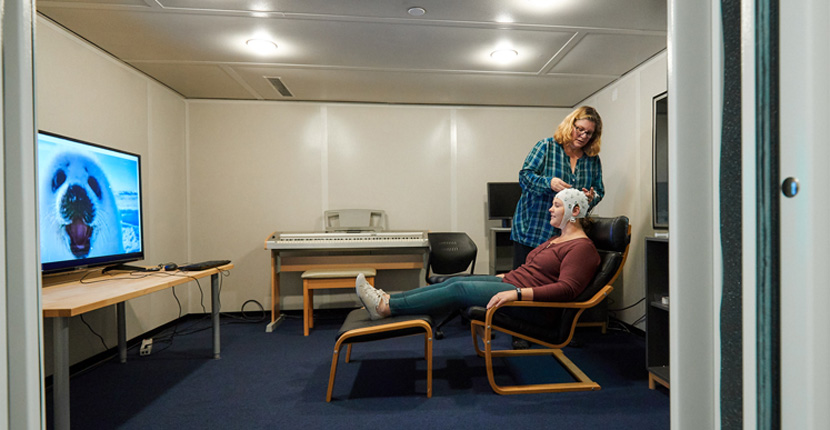
Projects
Measures of Emotional Vocal Expression
One way to investigate the relationship among emotion, cognition, and vocal production is to observe how the voice changes during emotional situations or cognitively taxing environments. In order to observe these vocal changes, we need to establish vocal measures of emotion. Although there are established measures of emotional facial expression, measures of vocal expression remain unclear and difficult to capture. Our laboratory employs established vocal measures in the field of voice science to investigate their ability to reflect internal emotional experiences through expression. We focus on vocal physiological measures such as electroglottography, electromyography, and airflow measures and select acoustic measures such as relative fundamental frequency and cepstral peak prominence.
Individual Differences in Response to Vocal Mistakes
Disruptions in normal voicing frequently occur, particularly during periods of illness (e.g. upper respiratory infections), in loud, noisy environments, or during heightened emotional or stressful experiences. Determining how individuals respond to vocal disruptions (errors) may provide insight into how some voice disorders are developed. Our laboratory develops strategies to elicit vocal errors in emotional and cognitively taxing environments while measuring brain wave potentials in response to those errors. In addition to brain responses, our laboratory assesses physiological changes during vocal error events such as heart rate, respiration activity, and muscles of the face and neck.
Establishing Measures of Vocal Effort
An important vocal reflection of emotional or cognitive experience is perceived vocal effort, sometimes called perceived phonatory exertion. This is the personal experience of how much effort it takes to vocalize. Our laboratory, in conjunction with other laboratories, is working on establishing a standard method with which to measure vocal effort in individuals. Specific goals include developing appropriate anchors for the measurement scales, creating effect elicitation techniques for vocal effort, and validating these measures across individuals with and without voice disorders.

